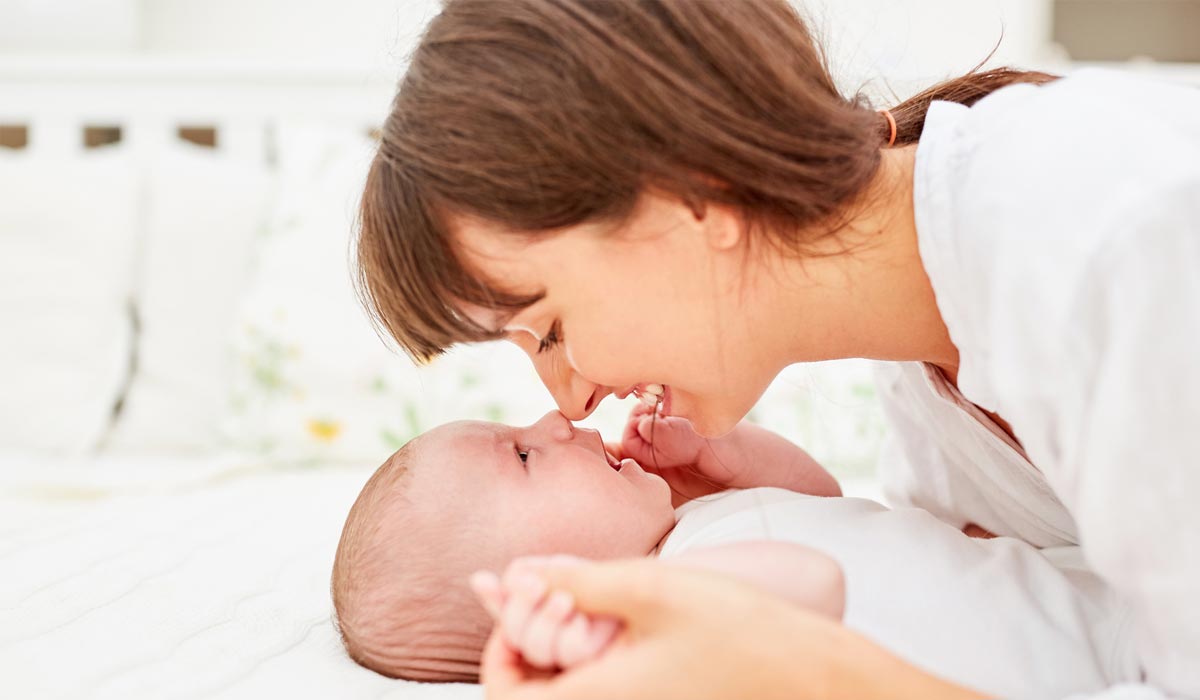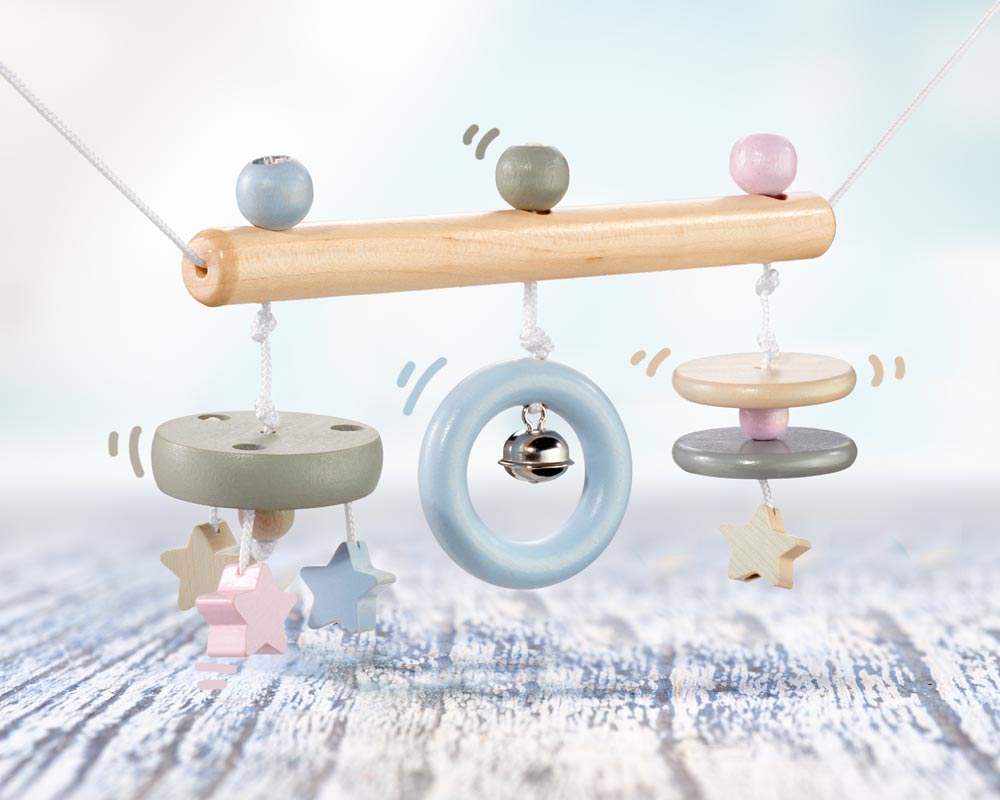The nine-month wait is finally over. Now you are able to hold the long-awaited addition to your family in your arms. You watch this tiny human being excitedly and ask yourself what is going on in the baby’s head. Can they see us? What can they understand? Parents know intuitively that their little miracle has come into the world already able to do many things. Here are the most significant milestones of development in the first six weeks of life.

Sight and hearing
After birth, a newborn baby’s vision is very blurred. They can only discern shapes and strong contrasts. But babies love faces, and even at this early stage your child might try to make eye contact with you, although they need to get very close to do so. If they don’t want to look at you, this is probably because they are either tired or otherwise distracted.
Just a few days after birth, a baby can recognise their mother’s voice and distinguish it from other women’s voices. At around two weeks old, they can even make a connection between voice and face. Researchers tested how a child would react if the familiar sounds of their mother’s voice were combined with an image of a strange woman. The result was a confused, grizzling baby. So your offspring is never happier than when you look at them lovingly while speaking softly.
A newborn baby’s facial expressions
At first your baby will spend most of their time asleep or regularly demanding food. While it might look as if this is all they are doing, your child is actually using all their senses almost round the clock and processing the numerous impressions they are receiving from their new environment. They can also show how they feel through their facial expressions; when they yawn, they are tired. Laughing while kicking shows you that they are feeling good.
Communication: babies love smiling faces
In order to communicate with your child, you should get as close as you can to their face (that is, not more than 20 cm away from it). From this distance, your baby can easily make out strong facial expressions and, even at this early stage, might attempt to imitate them. Be a little silly and make funny faces, because your child is not yet able to interpret subtle emotions. Speak softly while you are doing this, and smile a lot; this will soon elicit a happy squeal in response.





